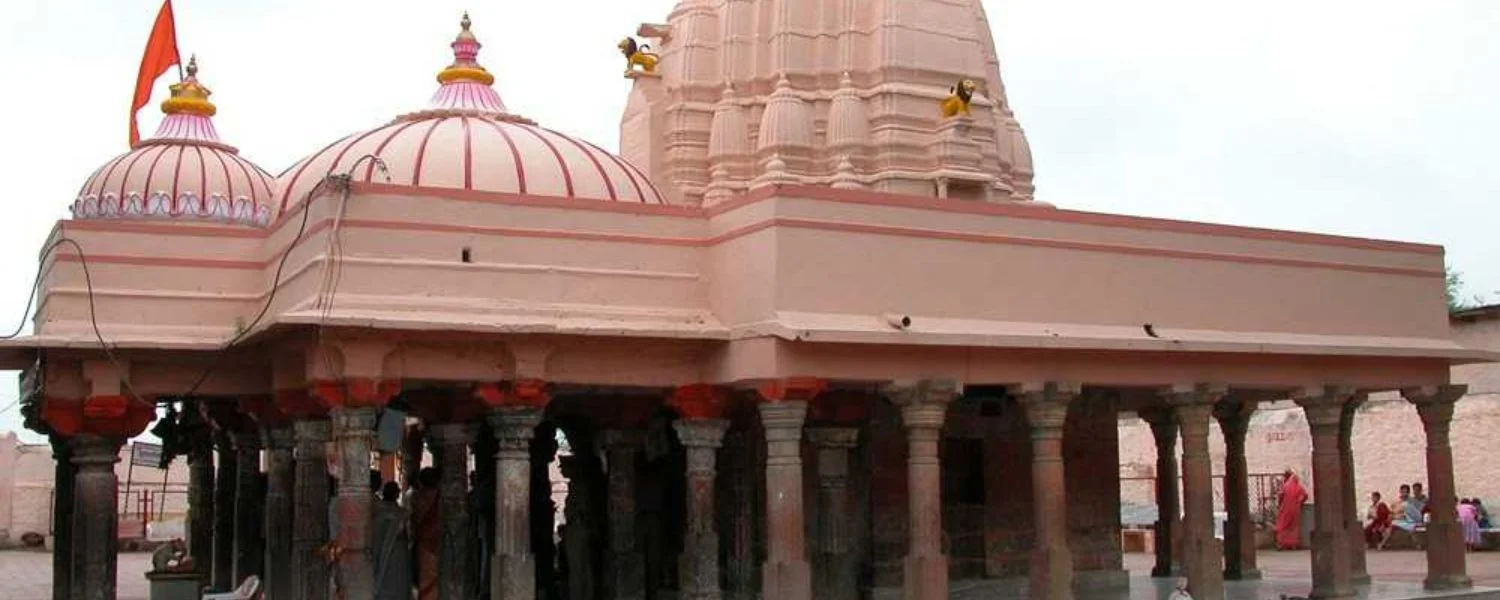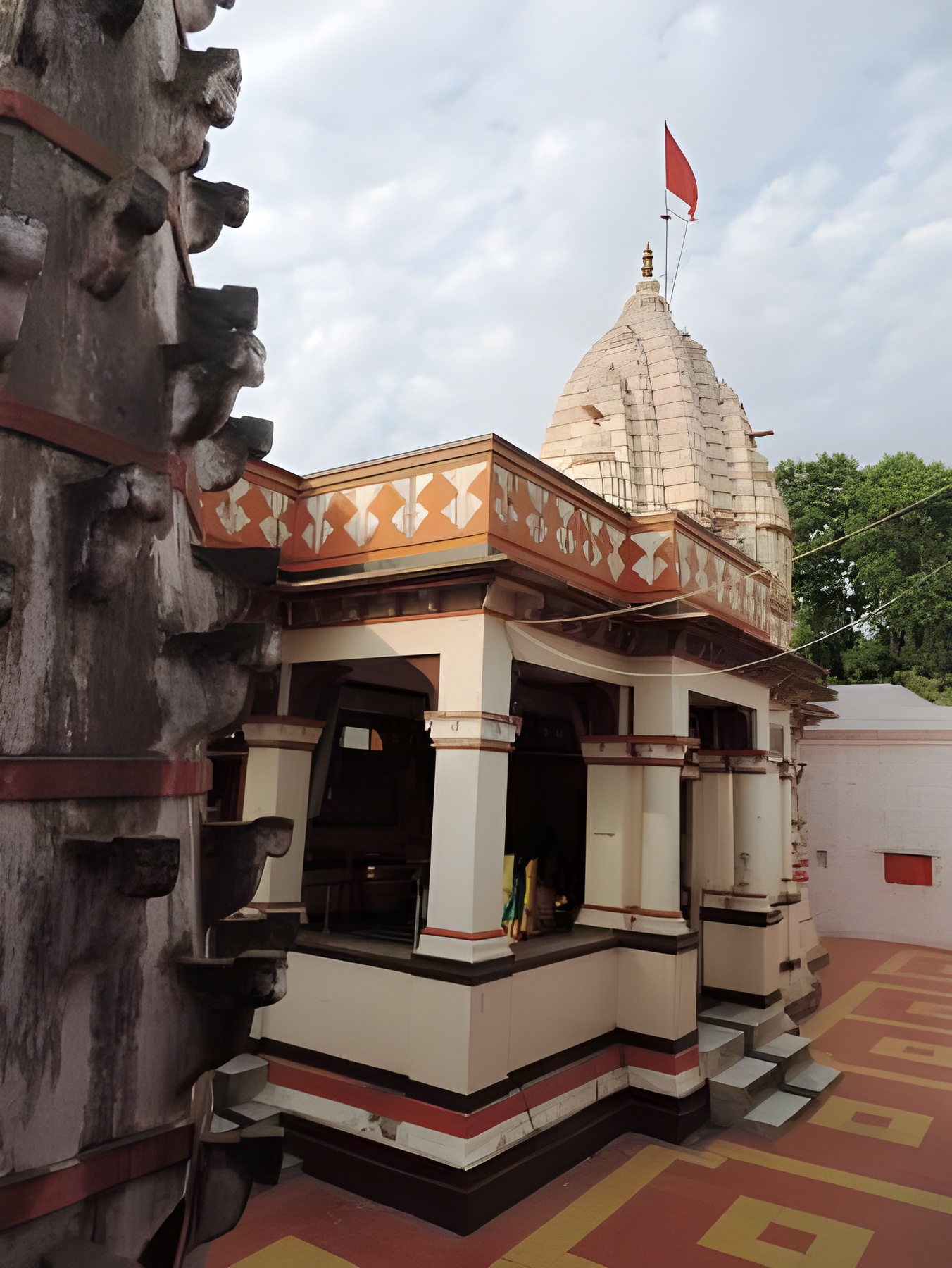
Gadhkalika Temple
The Mahakali Temple in Ujjain, also known as Gadhkalika Temple, is steeped in history and cultural significance. This temple is dedicated to Goddess Kali and is one of the eighteen Shakti Peethas, where the upper lip of Goddess Sati is believed to have fallen.
History Behind the Gadkalika Temple
The Mahakali temple is located near the Bhartrihari Caves, about 5 km from Ujjain railway station, Madhya Pradesh.
The Mahakali Temple holds a prominent place in Hindu mythology. It is one of the eighteen Shakti Peethas, which are sacred sites associated with the goddess Shakti. According to legend, when Lord Shiva carried the body of his consort Sati, her upper lip fell at the site of the Mahakali Temple. This event is commemorated by devotees who visit the temple to seek blessings and pay homage to the goddess. The temple’s connection to this legend enhances its spiritual significance.
The temple’s origins are believed to date back to the period of the Mahabharata war. The idol of Goddess Kalika is said to be even older, from the era of Satyuga. The temple was renovated in the 7th century by King Harshvardhan and later rebuilt by the erstwhile Gwalior State. The temple’s serene surroundings and spiritual ambiance offer a profound experience for those seeking solace and divine blessings.
The Gadkalika Temple in Ujjain is not just a place of worship but a testament to India’s rich cultural and historical heritage. Its mythological origins, historical development, architectural beauty, and cultural significance make it a must-visit site for anyone interested in exploring the spiritual and historical tapestry of India.
The temple is believed to be a Siddha Peetha, where seekers perform spiritual sadhanas to gain mystical powers

Stories About the Temple
Kalidasa’s Transformation
One of the most captivating tales is that of the renowned poet Kalidasa. According to legend, Kalidasa began his life as an uneducated shepherd. With fervent prayers to Goddess Kali at the Mahakali Temple, he sought wisdom and literary prowess. The goddess bestowed her blessings upon him, transforming him into one of the greatest poets and scholars in Indian history. His works, including ‘Meghadhoota,’ ‘Abhijnanasakuntalam,’ ‘Raghuvamsam,’ and ‘Shakuntala,’ are celebrated as masterpieces of Sanskrit literature. Below are a few lines from the Shyamala Dandakam composed by Kalidasa:
Manikyaveenam upalalayantim, Madalasam manjula vaag vilasam,
Mahendra neela dhyuti komalangim, Mathanga kanyam manasa smarami.
Meaning: I meditate upon the daughter of sage Matanga, who plays the veena made of precious gems, she is full of bliss and has a graceful flow of speech filled with beauty and charm. Her body is as radiant and soft as the deep blue of sapphire.
King Vikramaditya’s Devotion
Another enthralling tale features King Vikramaditya, a legendary ruler celebrated for his wisdom and valor. According to legend, Vikramaditya was a devout worshipper of Goddess Kali. He frequently visited the Mahakali Temple to seek her blessings before undertaking significant endeavors. His profound devotion to the goddess was such that he credited his success and prosperity to her divine grace.
The Shakti Peetha Story
The Mahakali Temple is one of the Shakti Peethas, revered sites where parts of Goddess Sati’s body are believed to have fallen. According to the story, when Lord Shiva carried the body of his consort Sati, her upper lip fell at the location of the Mahakali Temple. Devotees commemorate this event by visiting the temple to seek blessings and pay homage to the goddess.
These stories not only enrich the history of the Mahakali Temple but also inspire devotees and visitors with their tales of devotion, transformation, and divine blessings.
The Goddess Mahakali Murti
The murti of Gad Mahakali is depicted in a fierce form, symbolizing power and protection. The goddess is adorned with red sindoor and is often draped in bright red or saffron-colored attire. She has a terrifying yet divine expression, representing her vigilance and the ability to see through illusions. She has her tongue protruding, symbolizing her insatiable thirst for justice and destruction of evil. The idol is adorned with garlands of lemons, a common offering to Mahakali, symbolizing the absorption of negative energies. She is shown wearing skulls or severed heads, reinforcing her aspect as the destroyer of negativity and ignorance. The Murti is adorned with various weapons, including a sword and a trident, signifying her role as a warrior goddess who vanquishes demons and protects her devotees. Goddess Kali is typically depicted wearing a garland of skulls and a skirt made of severed arms, which symbolize the cycle of life and death and her dominion over time. The murti is often adorned with intricate jewelry, enhancing her divine and majestic appearance. The temple and murti are associated with tantric practices, attracting devotees seeking blessings for protection and power.
The temple’s historical significance is further highlighted by its association with the great poet Kalidasa, who is said to have worshipped Maa Gadhkalika here and gained his literary prowess.
The temple is not only a place of worship but also a center of cultural activities. It is believed that the great king Vikramaditya and poet Kalidasa worshipped Devi here. The temple’s significance extends to students and scholars who seek the blessings of Maa Gadhkalika for academic and literary success.
One of the most striking features of the temple is its twin oil lamps (Deep Stambhas), which are believed to be self-illuminated by divine energy. Devotees say that in ancient times, these lamps would miraculously light up without human intervention during special occasions and festivals.
Mahakali Temple's Festivals
The Murti is the focal point of worship in the Gadhkalika Temple. Devotees offer prayers, flowers, and other offerings to seek her blessings and protection.
The temple is renowned for its vibrant Navratri celebrations. During this festival, the temple is adorned with lights and flowers, and thousands of devotees gather to participate in the rituals. The atmosphere is filled with devotion and joy as people sing hymns and perform dances in honor of Goddess Kali. The celebrations are a testament to the enduring cultural and spiritual significance of the temple.
Architecture of the Temple
The temple’s architecture reflects its ancient origins and cultural heritage. It features intricate carvings and sculptures that depict various aspects of Hindu mythology. The temple follows a classic Nagara-style of Hindu temple architecture, commonly found in North India. The temple has a fort-like appearance, which is why it is also called Gadh (fort) Kalika. The exterior is adorned with stone and lime-plastered walls, giving it a sturdy and ancient look. The entrance has ornate carvings and sculptures, reflecting the rich history and devotion associated with the site. The sanctum houses the idol of Goddess Mahakali, which is adorned with sindoor, garlands, and traditional ornaments.The inner sanctum is dimly lit, creating an aura of mysticism. The temple has an assembly hall (mandapa) supported by intricately carved pillars. The hall is used for rituals, chanting, and bhajans dedicated to the Goddess.
